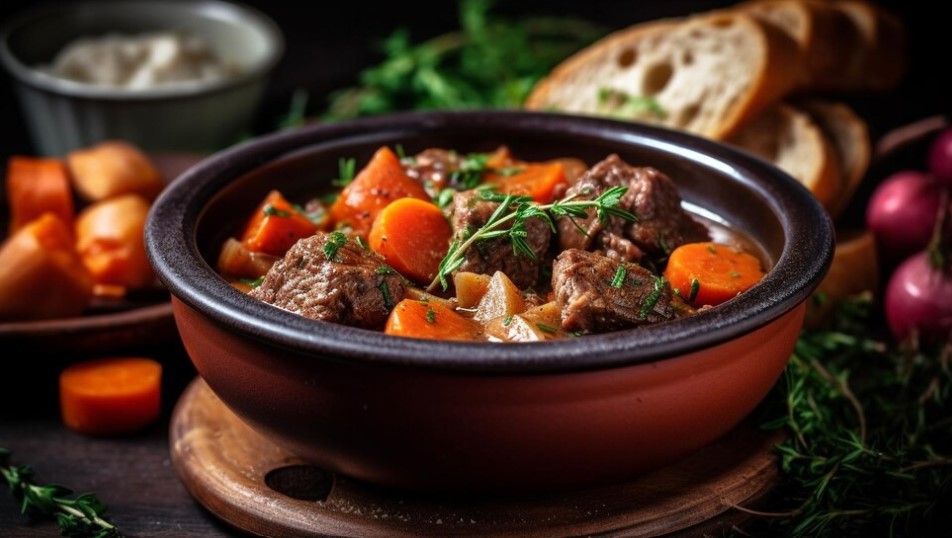The history of Slow Cooker Beef Stew, like many classic dishes, is deeply rooted in the evolution of cooking methods and culinary traditions. Stews, in general, have been cooked slowly for centuries, allowing people to make the most of available ingredients and create flavorful, hearty meals.
The concept of using a “slow cooker” as we know it today, however, is more recent. In the early 20th century, inventors and manufacturers began producing electric slow cookers, often referred to as “Crock-Pots” (a trademarked name by Rival Manufacturing). These kitchen appliances revolutionized home cooking by providing a convenient way to simmer dishes for extended periods of time without constant monitoring.
Slow-cooker beef stew quickly became a favorite among home cooks. Its simplicity, affordability, and ability to turn tougher cuts of beef into tender, flavorful bites made it a staple in many households. The “set it and forget it” approach allowed busy families to come home to a hot, ready-to-eat meal.
Today, Slow Cooker Beef Stew recipes vary from region to region and family to family, with each cook adding their own twist of flavors and ingredients. It continues to be a beloved comfort food and a symbol of home-cooked goodness, showcasing the timeless appeal of slow-cooked meals.
conclusion
Certainly, here’s a conclusion for your Slow Cooker Beef Stew:
Conclusion:
In the world of comfort food, few dishes rival the timeless appeal of Slow Cooker Beef Stew. Its rich flavors, tender chunks of beef, and hearty vegetables come together to create a meal that warms the soul and satisfies the senses. Whether you’re an experienced chef or just starting your culinary journey, this recipe offers simplicity and deliciousness in equal measure.
By following the steps outlined in this guide, you can craft a slow-cooker beef stew that’s not only easy to prepare but also packed with flavor. From the initial preparation to the patient simmering in your trusty slow cooker, each stage contributes to a dish that’s truly special.
Moreover, the versatility of this stew makes it perfect for gatherings with family and friends or for those quiet evenings when you simply want to savor a home-cooked meal. Leftovers can be stored for future enjoyment, allowing you to relish the comforting flavors once more.
